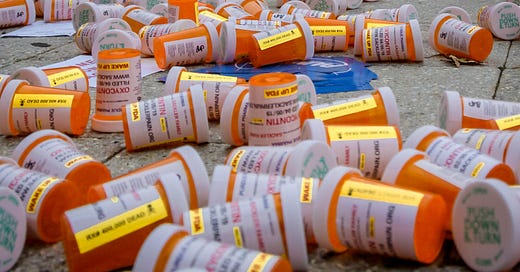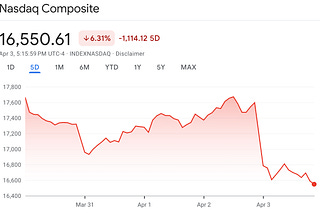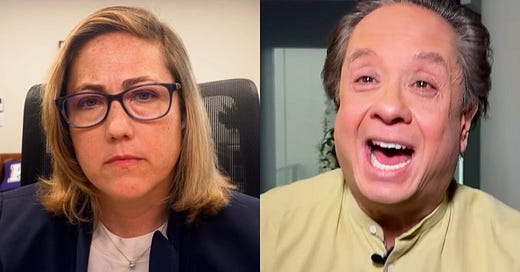
Are the Sacklers the Most Evil Family in American History?
Measured by deaths caused and damage wreaked, the pushers of OxyContin have arguably caused more harm than any other American family.

In an abnormally long six-hour session yesterday, Judge Robert Drain of the U.S. Bankruptcy Court announced his approval of a massive settlement against Purdue Pharma, the maker of OxyContin, and the Sackler family that owns the firm. As a result of the settlement. Purdue Pharma will dissolve and the Sacklers will pay $4.5 billion to settle thousands of individual lawsuits relating to the national opioid crisis.
The most controversial provision—shielding the Sacklers from further civil liability—means the settlement is sure to be contested. If the settlement is upheld, the Sacklers will be able to dribble out payments across many years and future lawsuits will be unable to pry additional damages from them, meaning that they will keep most of their estimated $11 billion and remain one of the richest families in America.
It’s worth remembering where these billions of dollars come from. Today, the opioid crisis seems a bleak tide, with 70,000 Americans dying in 2020 of opioid overdoses alone—up about 20,000 in a single year, with an annual economic toll of over $78 billion. At the 2012 peak, 255 million opioid prescriptions were issued nationally—meaning that for every ten Americans, there were eight prescriptions. It’s impossible to gauge how many addicted Americans have gone from prescribed pain medication to heroin, Fentanyl, and other narcotics, but over 500,000 deaths have occurred nationwide as a result.
This began with a plan crafted with meticulous strategy. Purdue Pharma’s OxyContin received FDA approval in 1995 and was marketed hyperaggressively from the onset. Along with lucrative bonus systems, increased sales teams, and the wholesale seduction of the medical establishment, Purdue even pumped out OxyContin-branded stuffed toys and fishing hats in their effort to get their drug to into as many bloodstreams as possible. (If you’re inclined to “Swing in the Right Direction” with an OxyContin music CD, that can be arranged.) By 2002, there were over 6 million annual prescriptions, leading the DEA to label the OxyContin campaign an “unprecedented” promotion.
The Sacklers were just getting started.
By 2008, Purdue Pharma’s then-president Richard Sackler linked OxyContin sales to not only the number of pills sold but their potency, creating the pharmaceutical equivalent of hollow-point ammunition—indistinguishable delivery mechanism, far greater lethality. As for Richard Sackler’s response to the crisis he had sparked? Addicts were to blame for their own deaths. As the New York Times reported, in 2001 he emailed: “We have to hammer on abusers . . . they are the culprits and the problem. They are reckless criminals.”
The Sacklers weren’t content to be a family of multimillionaire heirs; they wanted to be a family of multibillionaires. Thanks to OxyContin, this succeeded; the Sacklers rank thirtieth on the 2020 Forbes list of America’s richest families. As public and legal scrutiny grew, the Sacklers used a network of shell companies and offshore banking to siphon over $10 billion out of their beleaguered company and into their pockets in the last dozen years. No wonder their $4.5 billion settlement doesn’t sting so much. While announcing the settlement yesterday, even Judge Drain expressed frustration that (as the New York Times paraphrased him) “so much Sackler money was parked in offshore accounts.”
The Sacklers haven’t just used their privately held company as a personal ATM. They sought to sow the seeds of addiction as wide and deep as possible, so as to better reap its carrion rewards. Their explosion of personal wealth came at the expense of tens of thousands of American lives. Stunningly, whole towns have been lost, more lives gone than Vietnam. Astonishingly, 5 percent of U.S. counties dispensed enough opioid prescriptions for every person to have one—and this was as recently as 2019.
And still the drugs were relentlessly pushed.
The Sacklers and their prize drug will always be inseparable, however much they wish to cash out and walk away. Under blistering congressional interrogation in 2020, David Sackler admitted that at its peak OxyContin had made Purdue 90 percent of its profits. The Sacklers knew they had a gold mine, even if they realized, far sooner than most, that the mine had a nasty habit of destroying anyone who strayed near its deadly glitter. As early as 1997, his father, Richard Sackler, encouraged the myth that OxyContin was weaker—and thus safer—than morphine. There was gold to be had, and so the Sacklers eagerly built, as Patrick Radden Keefe termed it so fittingly in the New Yorker, an “Empire of Pain.”
The Sacklers have arguably caused more widespread harm to America’s social fabric—and correspondingly more American deaths—than any other single American family in history.
Unsurprisingly there is widespread disdain of a settlement that dispenses with over 3,000 separate lawsuits and shields the Sacklers—without so much as an apology in return. Public opinion has turned against the family, and the Sackler name is being scrubbed right and left from the museums and universities who took their money. That’s not enough. The institutions that so willingly accepted the Sacklers’ largesse should post clear signs explaining to the public how much they took and where it went.
The places with the deepest pockets—like Harvard, Yale, Columbia, the Metropolitan Museum of Art, the Smithsonian, and others—should make significant donations to the fight against opioid addiction. And they should not take any more from a family that deftly launders addiction and death in a warm, sudsy bath of philanthropy and goodwill.
For decades, the Sacklers sold a lethal drug while chiseling their eponymous letters on polished granite and marble across the country. They expect that we should thank them for their munificence and have the good manners to keep quiet.
We can’t get the lives back. But we can end the charade.










